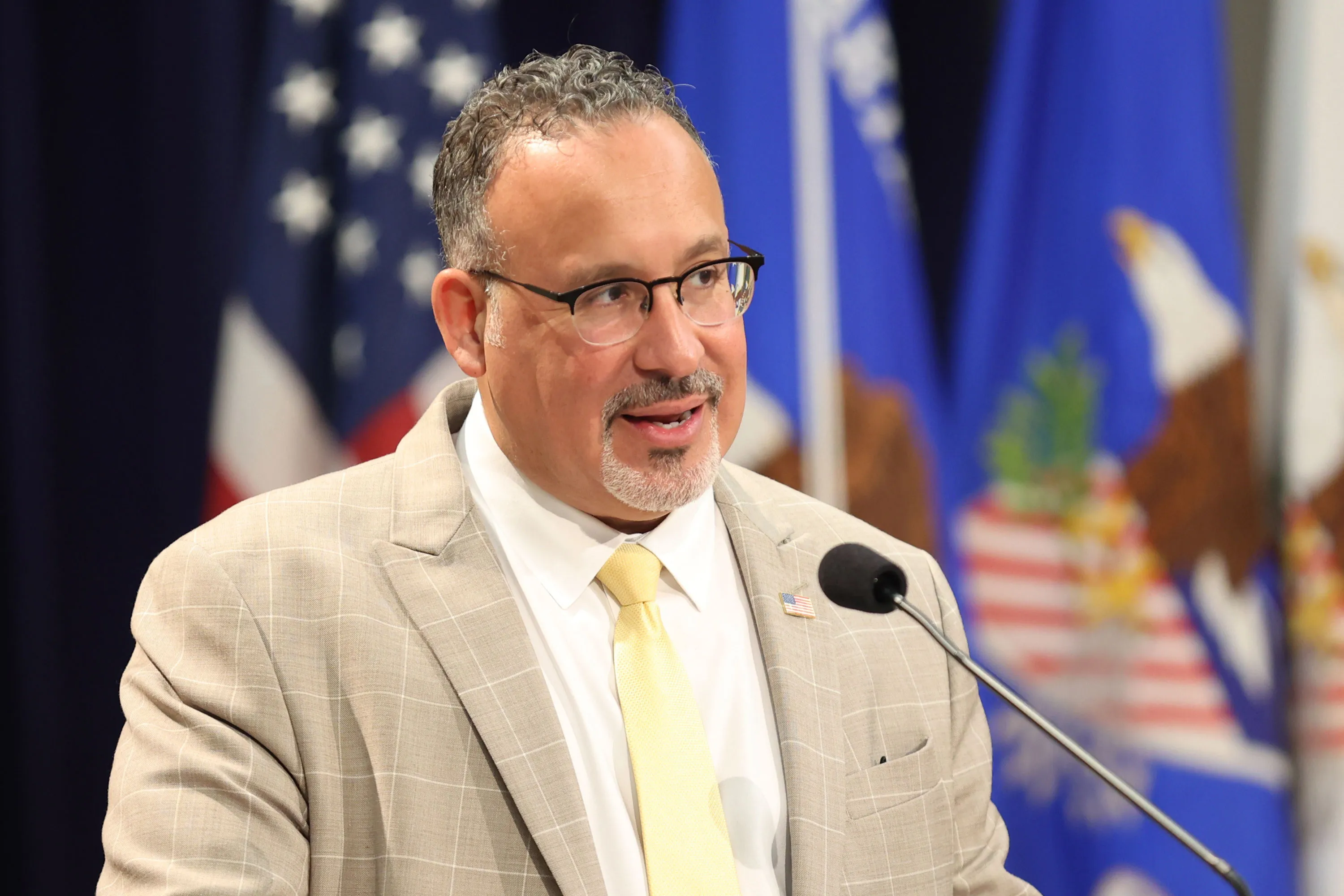College-bound students applying for financial aid this year will have to wait until December to start the process, after the Education Department said it would delay the release of the FAFSA following last year’s bungled rollout.
The form, officially called the Free Application for Federal Student Aid, will fully launch on Dec. 1 for the 2025-2026 academic year. A limited number of students and schools will be able to access the form during a testing period that will start Oct. 1, which is when the form is usually released.
On Wednesday the Education Department announced the plans for the phased rollout, saying it will allow for officials to identify and address issues before making the form widely available.
“We’ve heard from students, families, higher education professionals and other stakeholders loud and clear: They want a better, simpler FAFSA process, and they want to know when they can reliably expect it,” Jeremy Singer, the newly appointed FAFSA executive advisor, said in a news release.
New FAFSA delay follows old FAFSA delay
Last year, the release of the revised FAFSA form was supposed to be a boon for families by making the application simpler and quicker to fill out. Instead, repeated delays and technical glitches forced colleges to push back deadlines and frustrated financial aid offices and families alike.
The later-than-normal release for the 2025-2026 application is the latest signal that the saga isn’t over. Still, Wednesday’s announcement actually follows recent recommendations from financial aid officials and student advocates. In June, when the department was already behind on releasing a draft of the upcoming FAFSA for public comment, advocates pushed officials for better communication and transparency around the timeline.
And last month, five higher education groups wrote to U.S. Secretary of Education Miguel Cardona about the “trade-off between timeliness and functionality,” saying they’d prefer a fully working product, even if it meant delaying the release for up to two months.
Industry experts reiterated that point after the department announced its plans for the upcoming school year. “The fact that we are still, to this day, dealing with the aftershocks of this year’s FAFSA rollout shows just how imperative it is that the process is thoroughly tested from end to end and launched as a system, not in a piecemeal manner,” Beth Maglione, interim president of the National Association of Student Financial Aid Administrators, said in a statement.
What a phased FAFSA rollout means for families
Millions students fill out the FAFSA every year to access federal grants and student loans, as well as financial aid from states and colleges. The timeline for release is especially important to students who are applying to colleges.
They usually have to fill out the FAFSA, submit it to the colleges where they’re applying and then wait for financial aid packages before they can find out how much individual colleges will cost. In a typical year, when the form is released at the beginning of October, about half of FAFSAs from high school seniors are filed by Jan. 1, according to the National College Access Network.
Most financial aid priority deadlines are usually set for January and February. So, assuming the release of the form goes as planned, students who are applying in the regular decision pool shouldn’t see too much disruption from the later launch, says Shannon Vasconcelos, senior director of college finance at Bright Horizons College Coach.
But students who are applying in the early decision round may have to deal with delays. Colleges usually set financial aid application deadlines in November for those students, with the goal of providing financial aid awards along with the admissions offers that come out in mid-December. Some colleges could still meet that timeline if they require a financial aid application beyond the FASFA, Vasconcelos says. But at schools that only use the FAFSA, early decisions applicants will likely get late financial aid offers this year.
Over the next couple months, she recommends families keep an eye on the websites of colleges where they’re applying to see how they update their own financial aid timelines in response to the department’s new schedule.
For the phased rollout of 2025-2026 form, the department says it will ask for volunteers to participate in the testing period that will begin in October, starting with hundreds and expanding to tens of thousands of applicants. The goal is to iron out any problems that arise when students actually submit information before opening the form to all families. The Education Department says that students who fill out the application during the testing period will not have to resubmit the application.
Beyond that, details are limited, though the department said it will release more information about how the process will work in the coming weeks.
While experts always recommend submitting the FAFSA early in the year, Vasconcelos says there’s no rush to be one of the first to fill it out.
“I would let the department work out the kinks in the form before I was anxious to hop on there,” she says. “Colleges are not going to set any financial aid deadlines so early that you couldn’t complete it on the normal timeline.”
More from Money:
4 Loan Options for Parents Paying for Their Kid’s College
The Best Colleges in America
How to Pay for College
